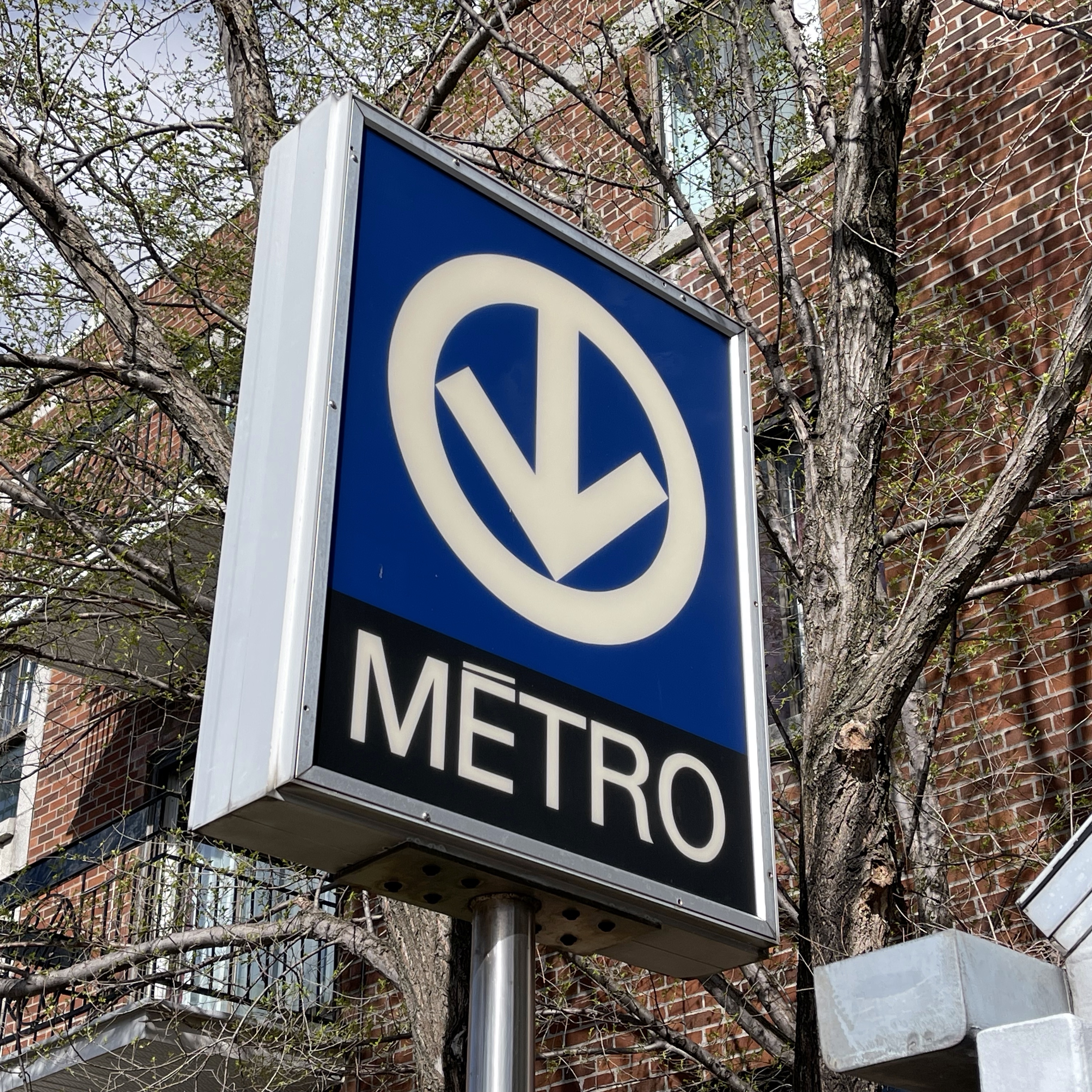
🧵 I live posted this entire adventure as it happened. If you’ve not yet read the previous post, which covers the day in real time exactly as it unfolded, with lots of photos 📸, check out the post I Visited Every Montreal Station in a Day!
It’s 4:56am on a chilly May morning, and I’m standing by the road waiting for the last night bus before the morning to take me east. Almost as far east as you can go on the island of Montreal, all so I can start a journey to visit every Montreal station in a day, and for the bargain price of 11 Canadian Dollars, the cost of a 24h bus pass.

Transit challenges have been a thing for while. The most famous of course is the London Tube Challenge, where challengers attempt to visit every tube station on the network within the same day.
But the online transit community is wont to invent ever more fun and novel challenges for themselves. For example, there’s the guy who tried to see how far he could get from London in a day using only buses and when that wasn’t enough he then did it from London to Paris.
And that’s not all. There’s also the brilliant “Runderground” Matt who ran the length of every Tube line in London, and also the high budget international Jet Lag the Game.
But I have neither the fitness levels nor the budget for such extreme shenanigans.
Instead, I drew inspiration from the well known All the Stations project, where Vloggers Geoff Marshall and Vicki Pipe visited every single station in the U.K. Their aim was to gain a snapshot of the U.K. rail system at that point in time through direct experience, and it’s the same spirit behind my challenge.
Montreal’s transit landscape has been mostly static for some time, with the last Metro expansion taking place in 2007. That’s soon about to change with the opening of the first section of the REM at the end of July and other smaller projects taking place over the coming years. This was the last chance to ride the system in its current incarnation.
Also, I wasn’t just visiting every station on the Metro, I was going to every station in Montreal, all 87 of them, and I was going to live blog the experience on social media as I went along.
Had I bitten off more than I could chew?
The Rules of the Game
All good challenges need rules, and this one was no different:
-
For a station to count as “visited”, it means being on a train which stops at the station. This includes boarding and disembarking.
-
Only stations on the island of Montreal (Zone A) need to be visited.
-
The challenge must be completed within 24 hours using only a Zone A 24h pass.
-
Metro and exo stations with the same name count as separate, even if they form an interchange. Eg: Vendôme or Sauvé.
-
It isn’t necessary to travel over every piece of track (so-called “track bashing”), so long as all stations are visited.
-
Any other reasonable mode of transit may be used to connect between two stations. Eg: bus, biking, waking, taxi.
-
It is not permitted to travel outside of Zone A, even if it would provide a more convenient connection between two lines (Eg: going via De La Concorde in Laval)
-
Intercity rail stations don’t count (so no Via Rail journeys)
Greater Montreal’s New Fare Structure
Until recently, the metropolitan area had a fragmented and complex ticketing system. Here in Montreal itself, you could buy a ticket – be it a single, or a day pass – which would work on the Metro and the buses run by the STM, Montreal’s transit authority.
If you wanted to use the commuter trains, you needed a separate ticket which used a needlessly complex zone system. You really needed to know which zone you were going to, as often the station maps were missing from the ticket machines. To complicate things further, if you wanted to take a bus in one of the off-island suburbs you needed yet another ticket to use the local bus networks, for example in Longueuil or Laval.
And then in 2022, spurred on by the inevitable arrival of the REM, the ARTM (the provincial body planning transit within Greater Montreal) decided to do what other cities had done decades ago: They introduced an integrated ticketing system.
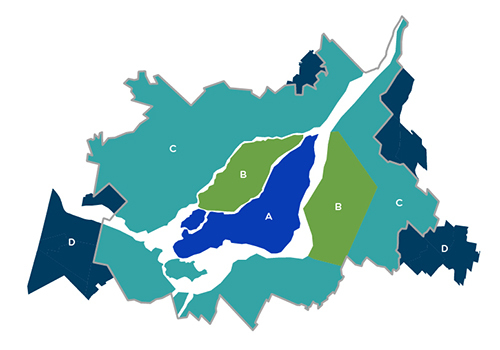
Instead of an unnavigable system of different operators and zones, the entire region now has just 4 zones labelled A, B, C and D. For the first time if you want to travel from a bus stop in the East of the island, along the Metro and then on an exo train out to the Western end, you need just one ticket for zone A.
It’s hard to explain how game-changing this is for transit accessibility unless you’ve had to contend with the old system, and it’s hard to understate how much this will open up the system to everyone.
For the first time in its history, Greater Montreal has a transit network.
To Fail to Plan…
It’s always best to have a plan, even if you don’t stick to it. In my case, my plan was a Google Sheet with timings and connections.
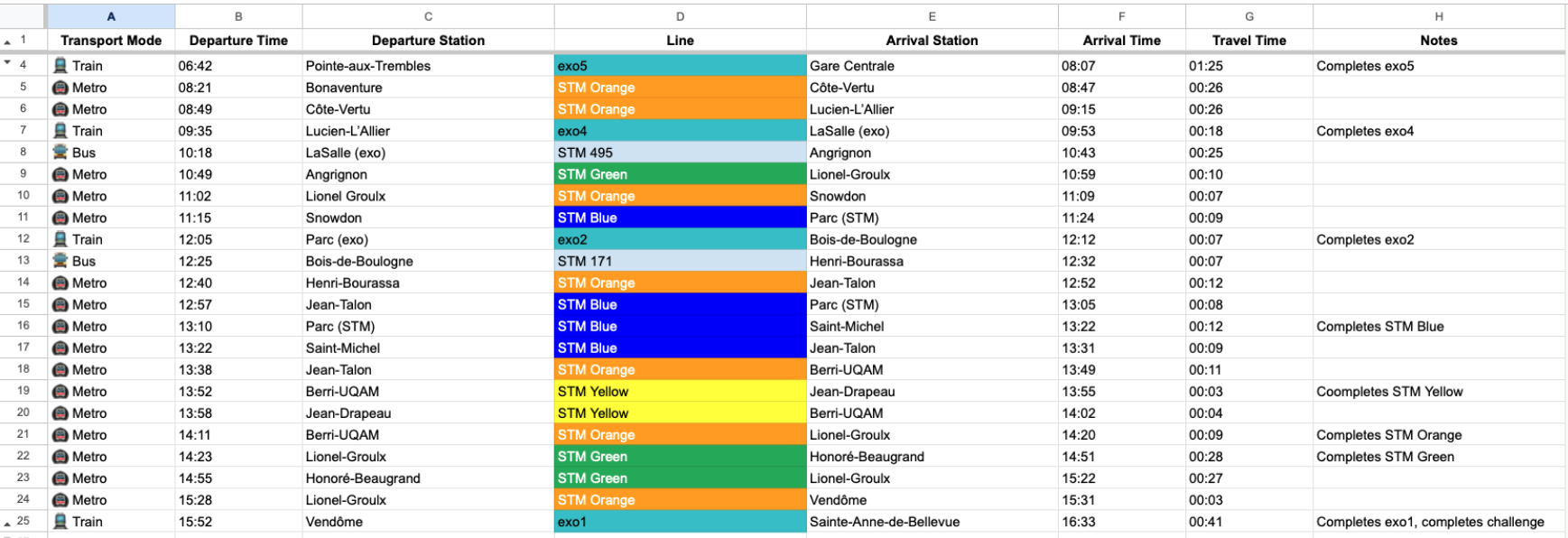
Critical to the plan’s success were timings around the exo lines. These trains run extremely infrequently versus the Metro which is a turn-up-and-go service.
This meant for the plan to work I needed to start the challenge in the island’s easternmost station at Point-aux-Trembles, and end at the westernmost station at Sainte-Anne-de-Bellevue. Which is why I found myself at a bus stop at 4:56am, in order to get out to Point-aux-Trembles and catch the first train of the day back into town.
Likewise, all of the other exo trips needed to be coordinated as a missed train would have scuppered the challenge. Metro stations could be ticked off in between the less flexible exo journeys and buses used to make connections between nearby stations without needing to backtrack.
If to fail to plan was to plan to fail, then I’d hopefully set myself up for success.
Going Underground
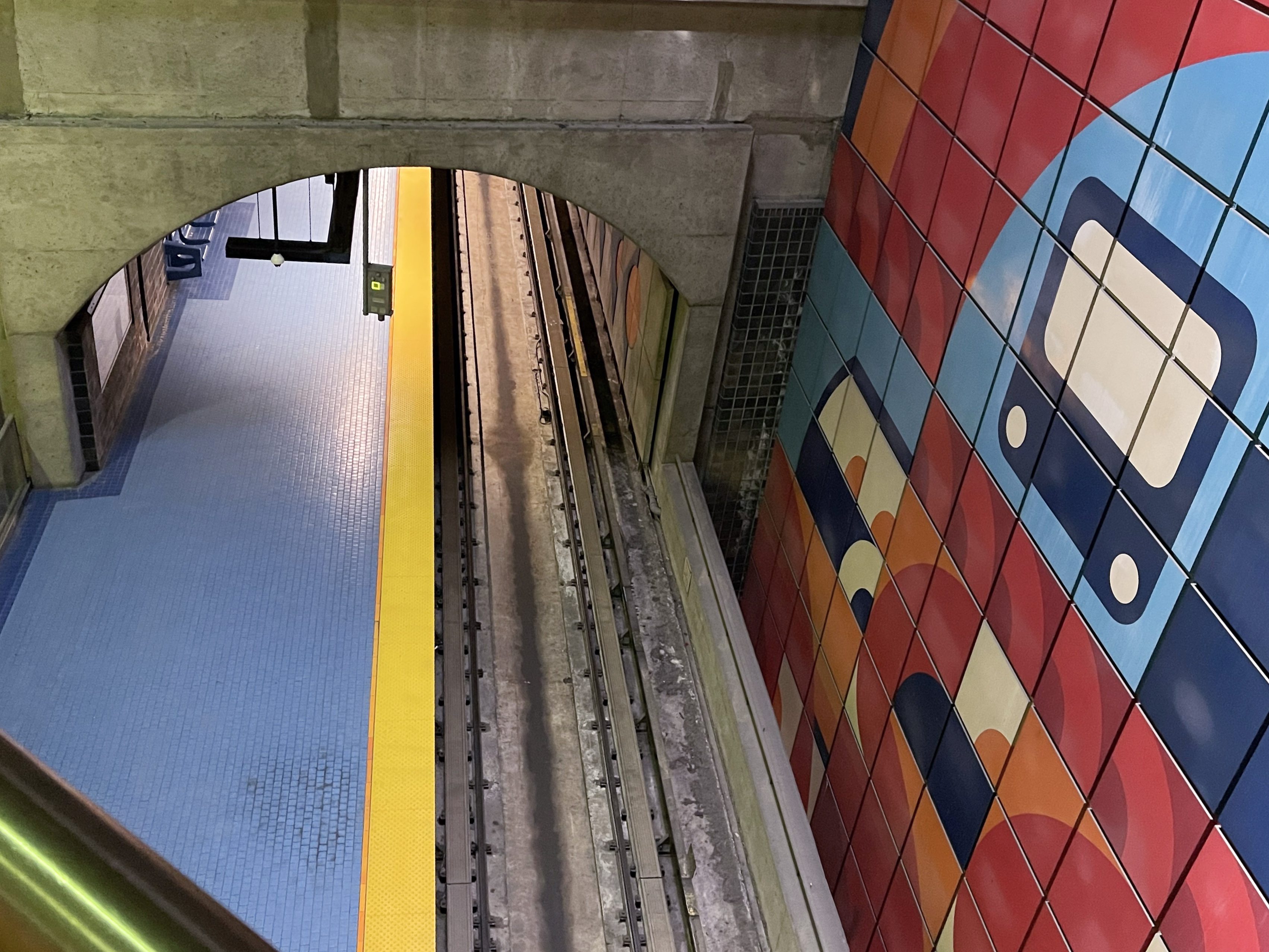
Doing the challenge reaffirmed my belief in the Montreal Metro as one of the world’s great metro systems. What it lacks in coverage – development was stunted after the 70s – it makes up for in grandiose.
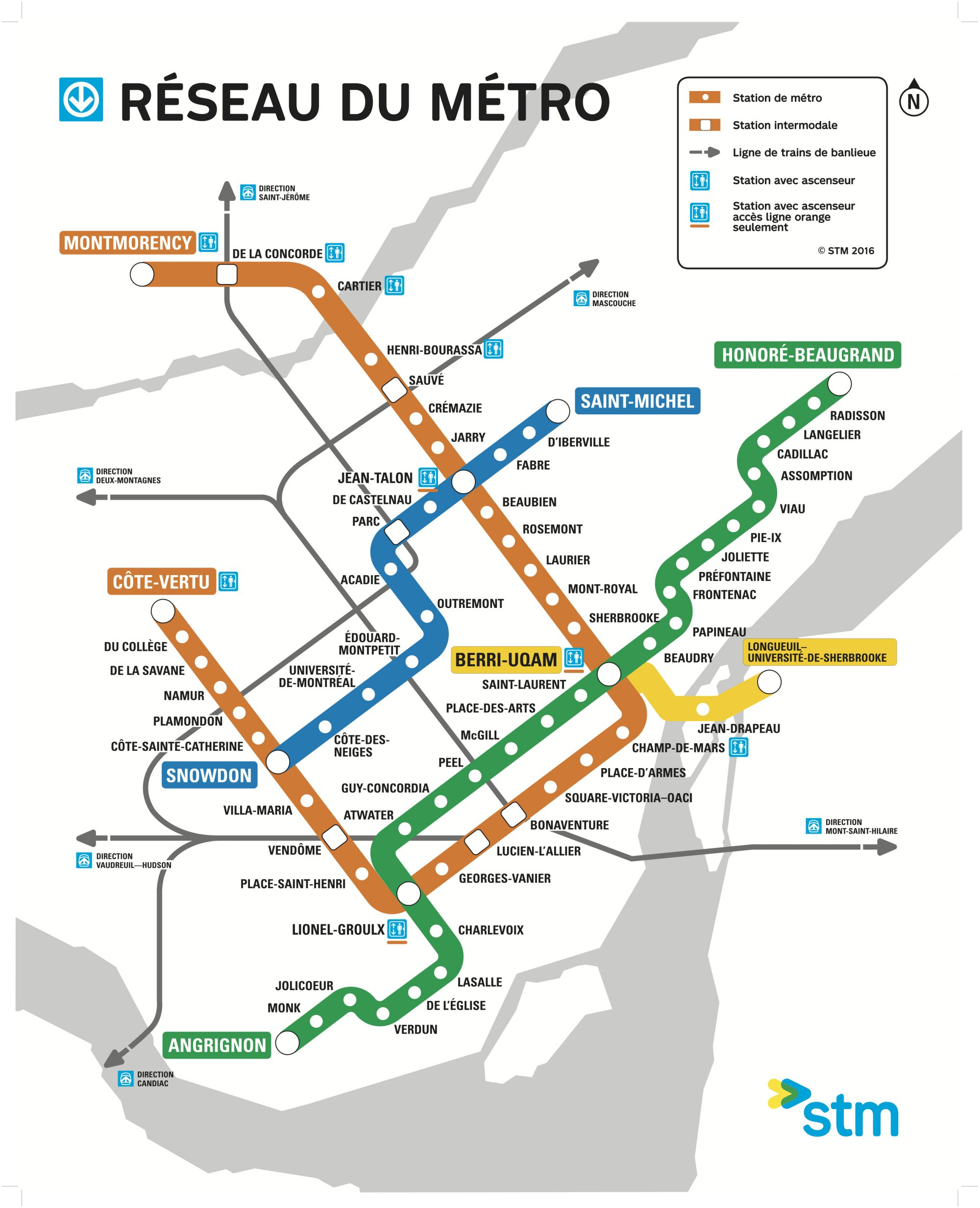
It’s hard to fault the system. It’s fast, frequent and (mostly) reliable – trains usually run every few minutes. The rolling stock are some of the most modern in operation in the world, running on rubber tyres similar to some lines on the Paris Metro.

The stations are cavernous spaces consisting of impressive architecture, often inspired by the brutalist movement. Each station has its own look making them all recognisable which helps with way-finding. Some are veritable cathedrals, impressive expanses with art installations. I think Montreal deserves a place up there with Stockholm and Moscow for its Metro architecture.
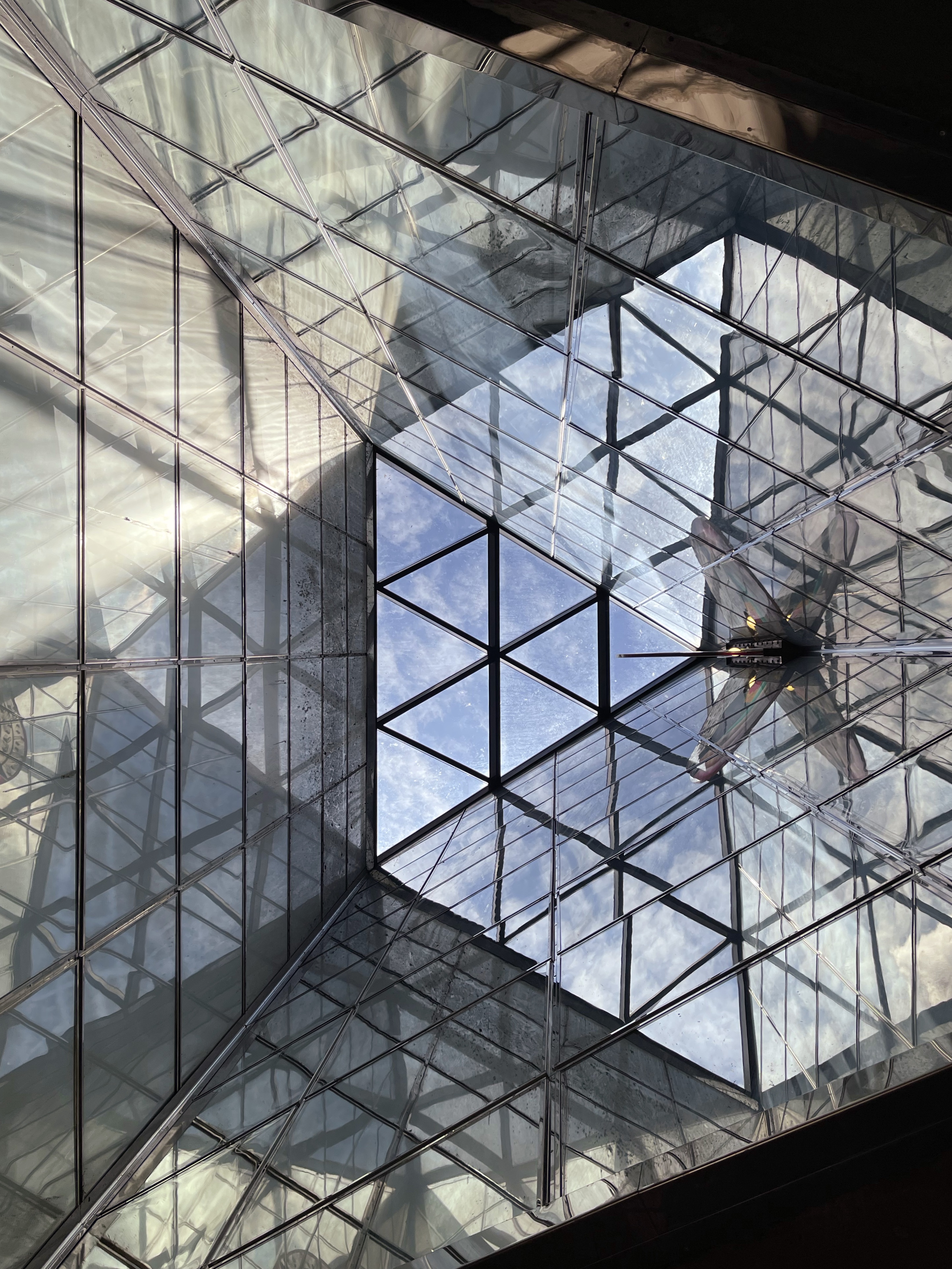
The only drawback to the Metro system is its lack of coverage. The initial core was built in the 60’s by Montreal’s most famous of mayors, Jean-Drapeau, spurred on by Expo 67. In the 70’s the system expanded further, again encouraged by another major event, the 1976 Summer Olympics.
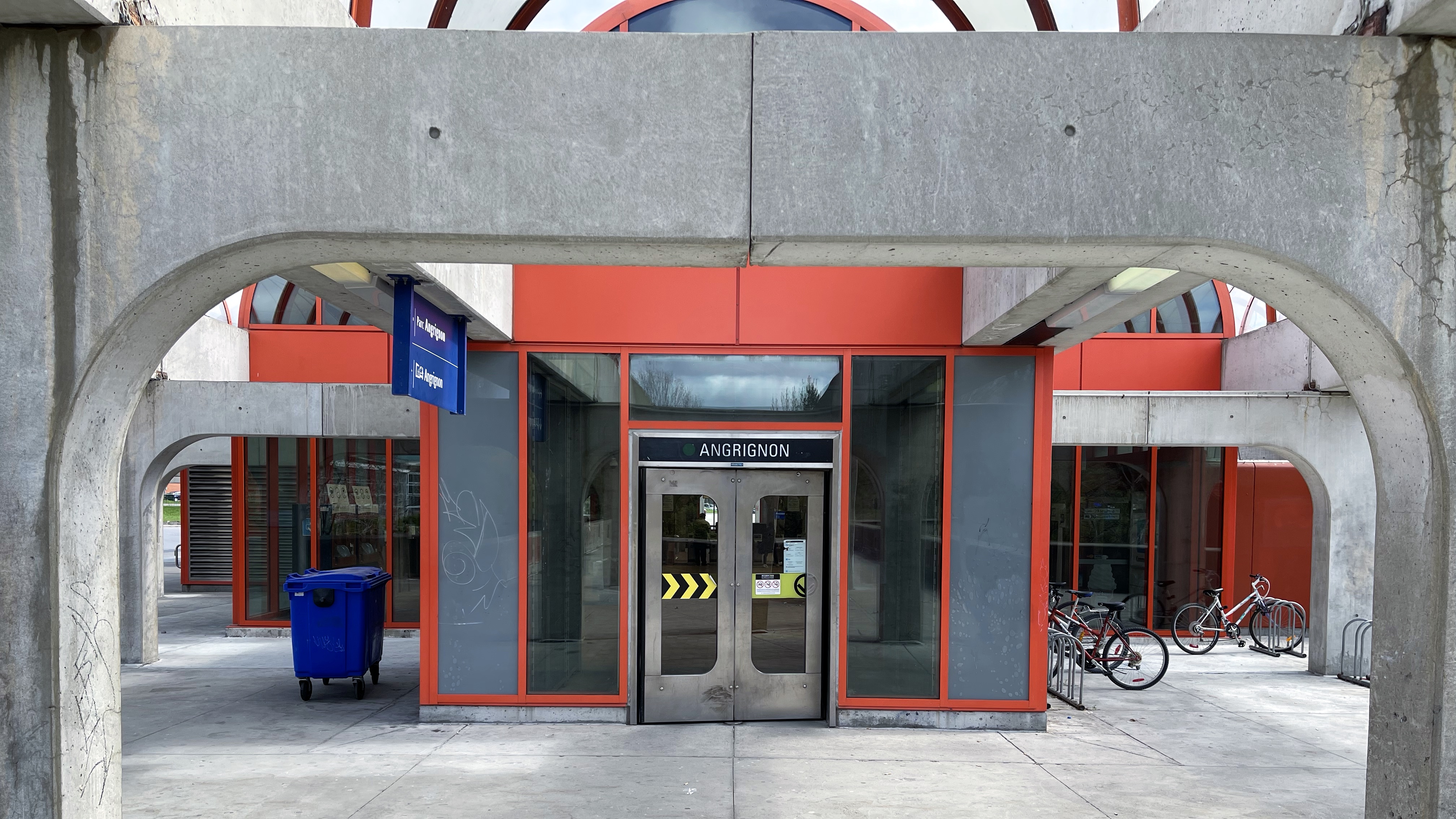
After this, the system stalled. The only further work carried out was an extension of the Orange Line into Laval in 1998 adding a further 3 stations to the network, although none of which were in Montreal.
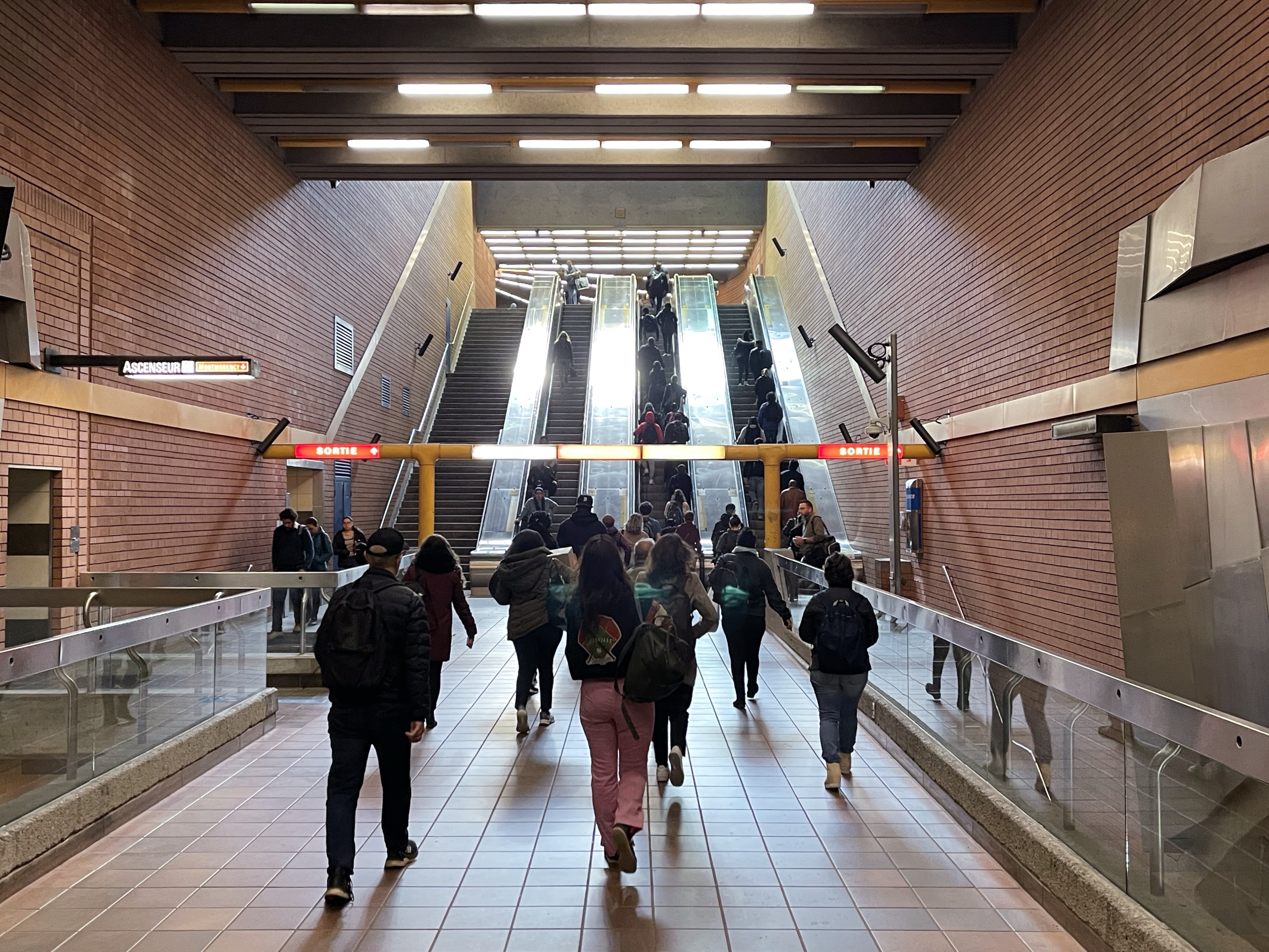
If you live within walking or cycling distance of a Metro station these days, you’re blessed. The bus network fills in some of the areas which are within reach of the Metro, but sadly much of the island remains a transit desert. Opportunities to expand the network during the 80’s were missed or squandered and these days costs for construction projects have become so large the authorities haven’t been willing to commit to a significant expansion of the Metro in over 40 years.
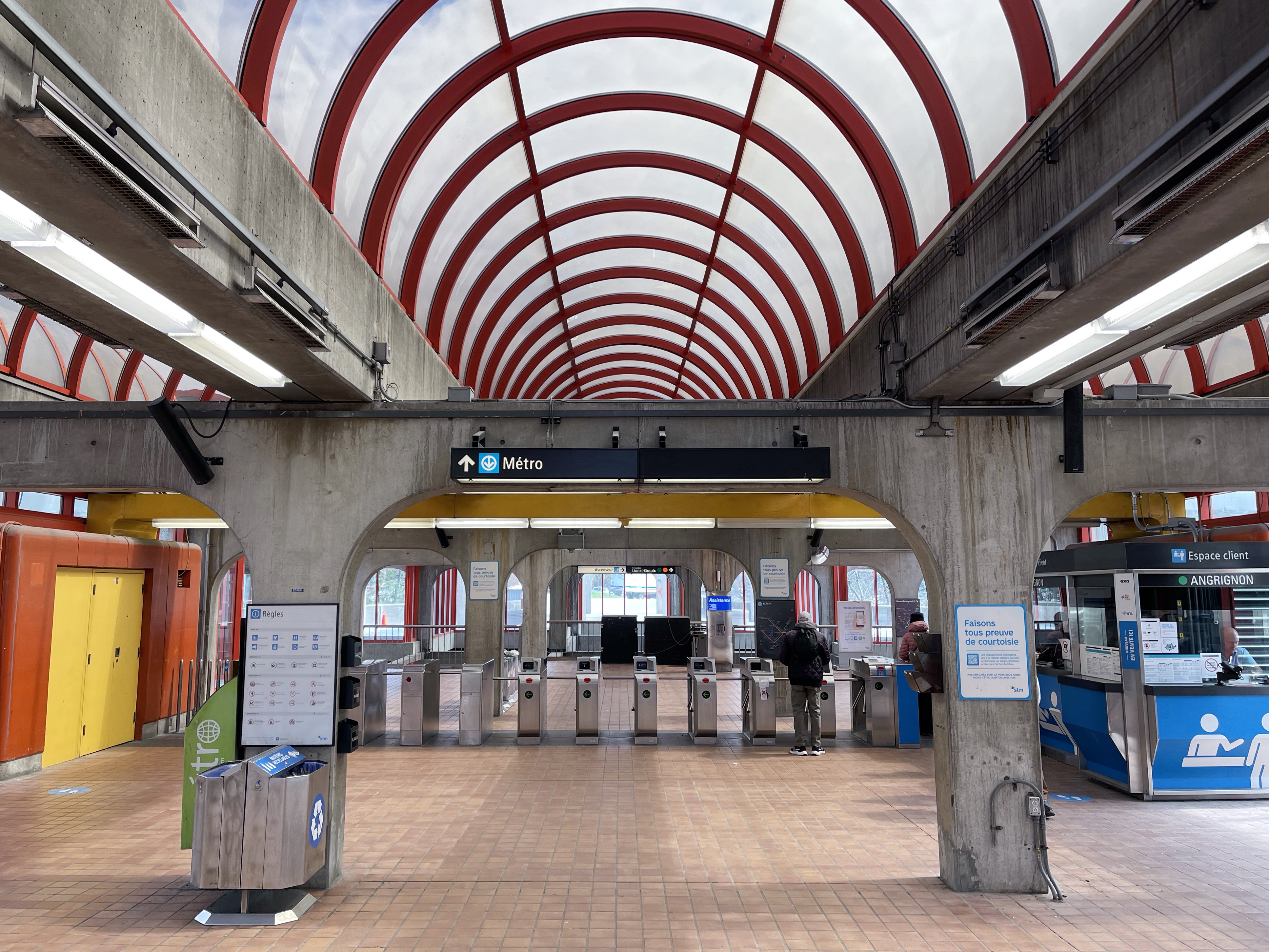
What Montreal did achieve in terms of its current metro coverage is one of the city’s greatest assets. 250 million trips per year are undertaken and passengers get to experience some beautifully designed stations.
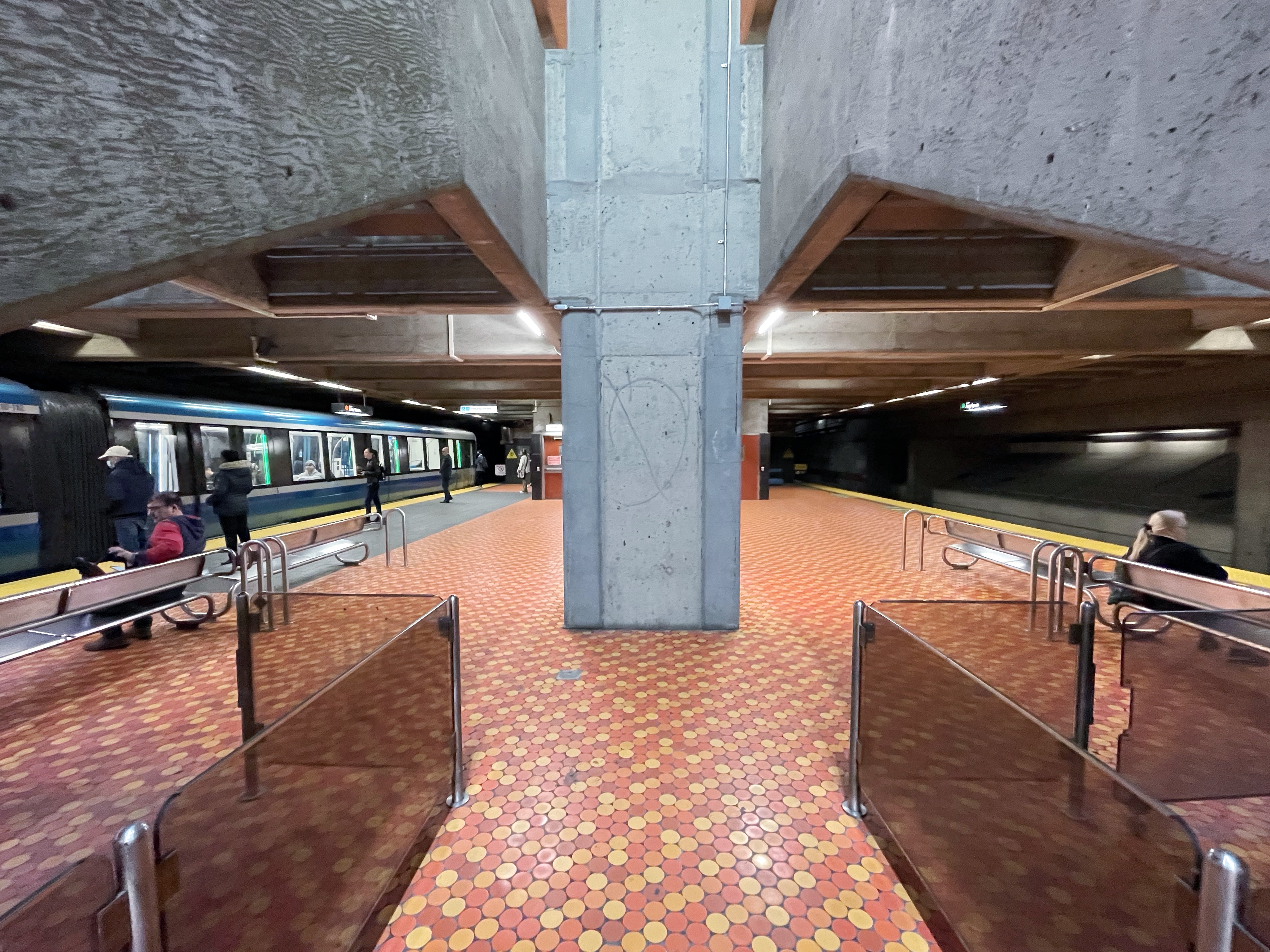
But, all of this is sadly in stark contrast to what’s happening above ground.
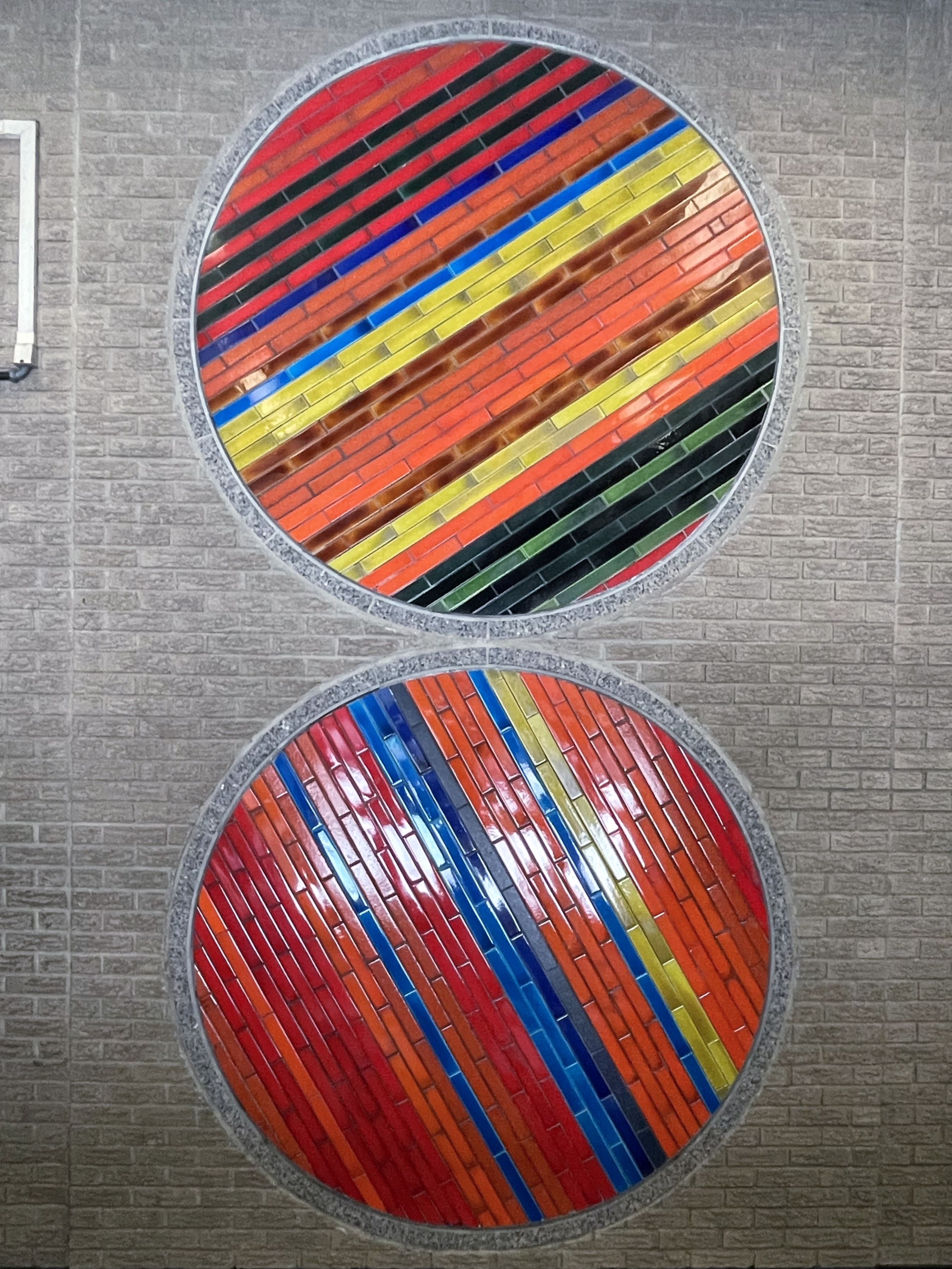
More Than Just Commuter Rail?

Montreal’s rail network, until the recent advent of the new fare zone system, had no real integration with the city’s Metro or bus network. With a couple of exceptions, even interchanges between the Metro and train required walking between separate stations.
To be blunt, The “exo” network – as its called now – is a classic example of a rail network which is full of potential but implemented badly. Really badly.
For the most part it plays the role of traditional “commuter rail”, a concept popular in North America but pretty alien in places such as Europe and Asia. Trains take commuters into the city in the morning, and out again in the evening. Service outside these times or in the opposite direction to commuters is low to non-existent.
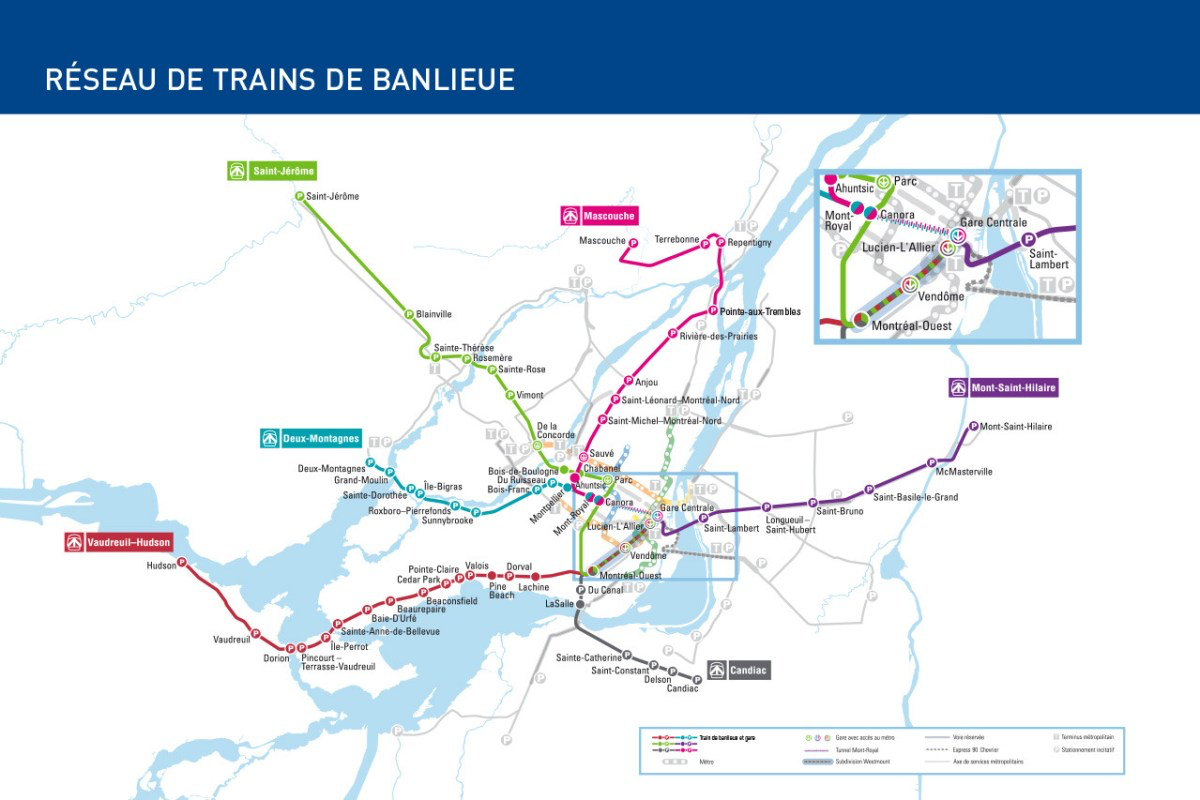
There are currently 5 lines in the network (there used to be 6, but as we’ll see later one was closed for a massive upgrade into the REM, a new light rail network). Each runs from one of two downtown Montreal stations out beyond the island and into the suburbs.
Here’s a quick table with some basic stats on each line. The number of services is per direction, so an “8” means 8 towards, and 8 away from Montreal making a total of sixteen per day¹.
| Line no. | Line Name | Weekday Services | Saturday Services | Sunday Services |
|---|---|---|---|---|
| exo1 | Vaudreuil–Hudson | 13 | 4 | 3 |
| exo2 | Saint-Jérôme | 14 | 6 | 6 |
| exo3 | Mont-Saint-Hilaire | 7 | 0 | 0 |
| exo4 | Candiac | 9 | 0 | 0 |
| exo5 | Mascouche | 8 | 0 | 0 |
These lines have a rather varied service, which range from passable to appalling. Two lines have only Montreal-bound services in the morning peak, services away from Montreal in the evening peak, and barely any other services during the day. Thankfully the worst of these lines (Mont-Saint-Hilaire) doesn’t have any stations on the island beyond Gare Centrale, and so wasn’t a part of this challenge. There’s also a shocking lack of weekend service on a majority of these lines.
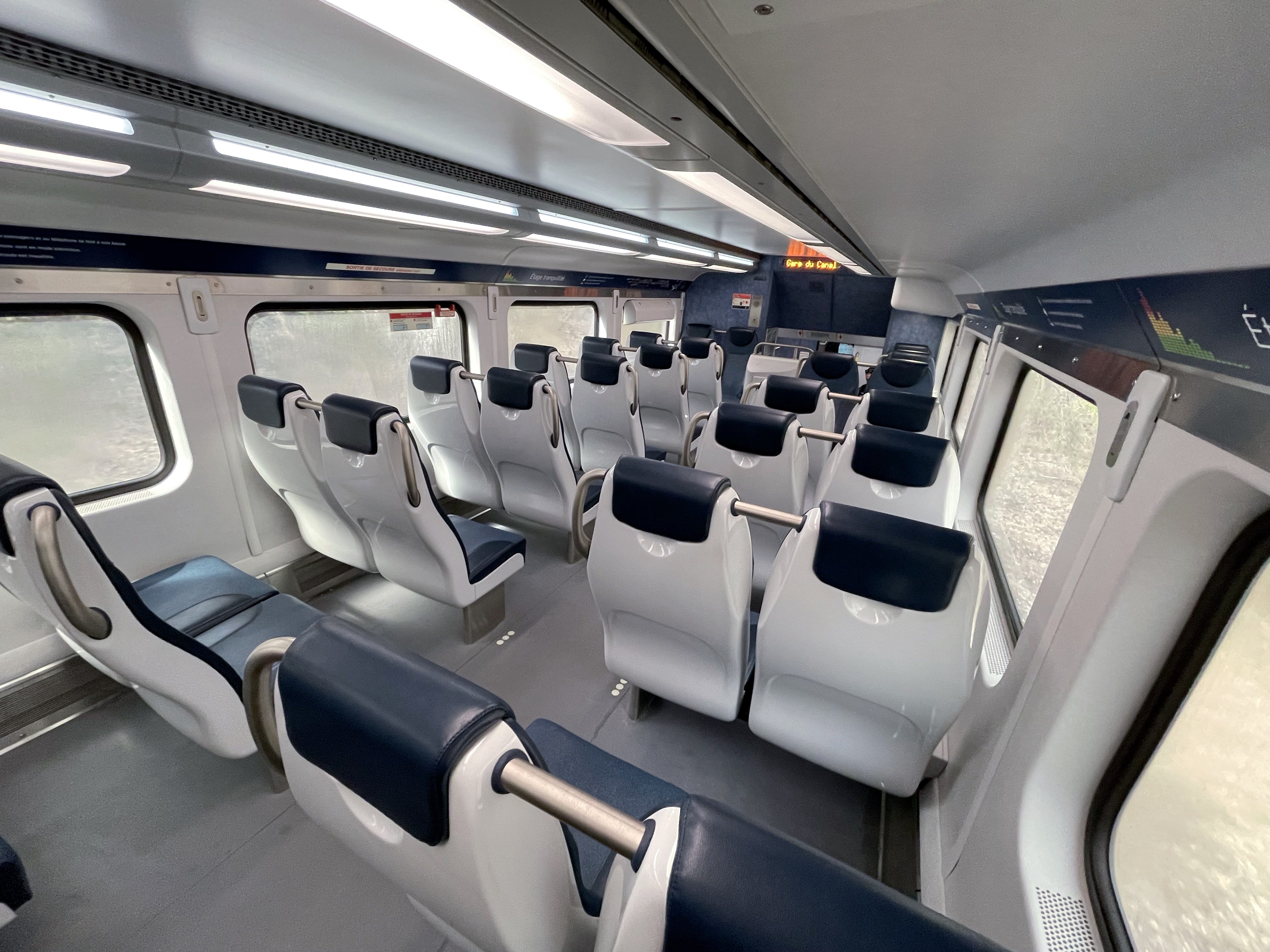
On the more positive end of the spectrum is the Vaudreuil–Hudson which has a somewhat respectable service throughout the day and into the early evening. It serves the communities in the so-called “West Island” of Montreal and its well used by those communities throughout the day.
Another shining beacon is the line to Saint-Jérôme which I’d consider to be regional rail, as it travels far away from the metropolitan area and has infrequent but regular services 7 days per week, making it perfect for excursions.
The newest of these lines, to Mascouche, costed an estimated CAD 671 million and inexplicably manages to only run 8 trains a day in each direction and none on weekends. It’s been further hampered by the need to sever the line from downtown to make way for the REM.
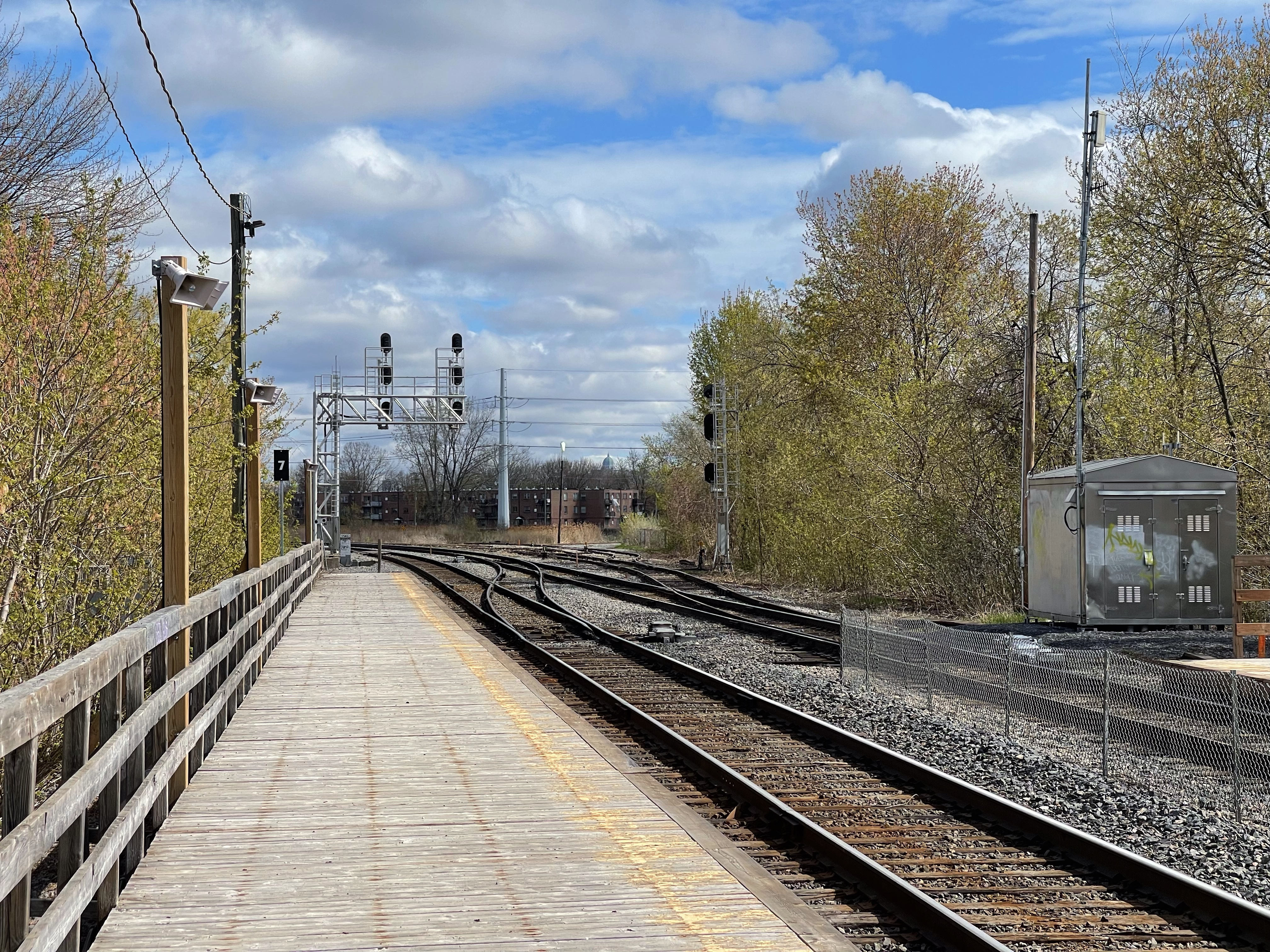
Most of these lines suffer from one degree or another from the blight of North American rail: Having to use tracks owned by the big freight companies. This can make it hard to schedule regular services where the freight companies will often prioritise their own trains. And that’s not to mention the poor condition of the rails and the fact some of it is often single-tracked creating additional bottlenecks. exo, to their credit, have been trying over the years to purchase sections of track from the freight companies so they can have right of way.
But the fact remains that since exo serves many stations on the island of Montreal, there’s an obvious potential for a regular all-day service which has been very neglected. If people could rely on these services, it would help modal shift away from cars. This is desperately needed within Montreal, which has some of the most gridlocked traffic on the continent.
However, the coming years may hold hope for the exo network… or they may begin to spell its demise.
The Future is Almost Here
Having been in a veritable stasis for so long, big changes are afoot in Montreal’s transit scene.
We’ve already discussed the new cohesive fare structure. It’s a behind the scenes change and not as exciting as new infrastructure, but it’s a significant quality of life improvement to transit usage in the city.

Next up is the new Pie IX Bus Rapid Transit line. It’s a simple and cost-effective solution to improving bus service and making it “metro-like”, and the city administration is already talking about a second BRT route along Henri-Bourassa. It wasn’t implemented using trams as it should have been, but it’s still an improvement over the traditional bus.
Looking ahead to 2029, the Metro’s Blue Line will have its long desired extension. Promised for what seems like 30 years, shovels are now in the ground.
Is a fully tunnelled 6 km extension worth the vast amounts of money it will cost? The jury is still out, but one can only marvel at the ludicrousness of how long it took to get this relatively small transit project off the ground.
The gem of this new transit network however is the impressive REM. The full Metro system as it stands today is 69.2 km, and the REM when completed will be a whopping 67 km, making it one of the largest automated light rail systems in the world.
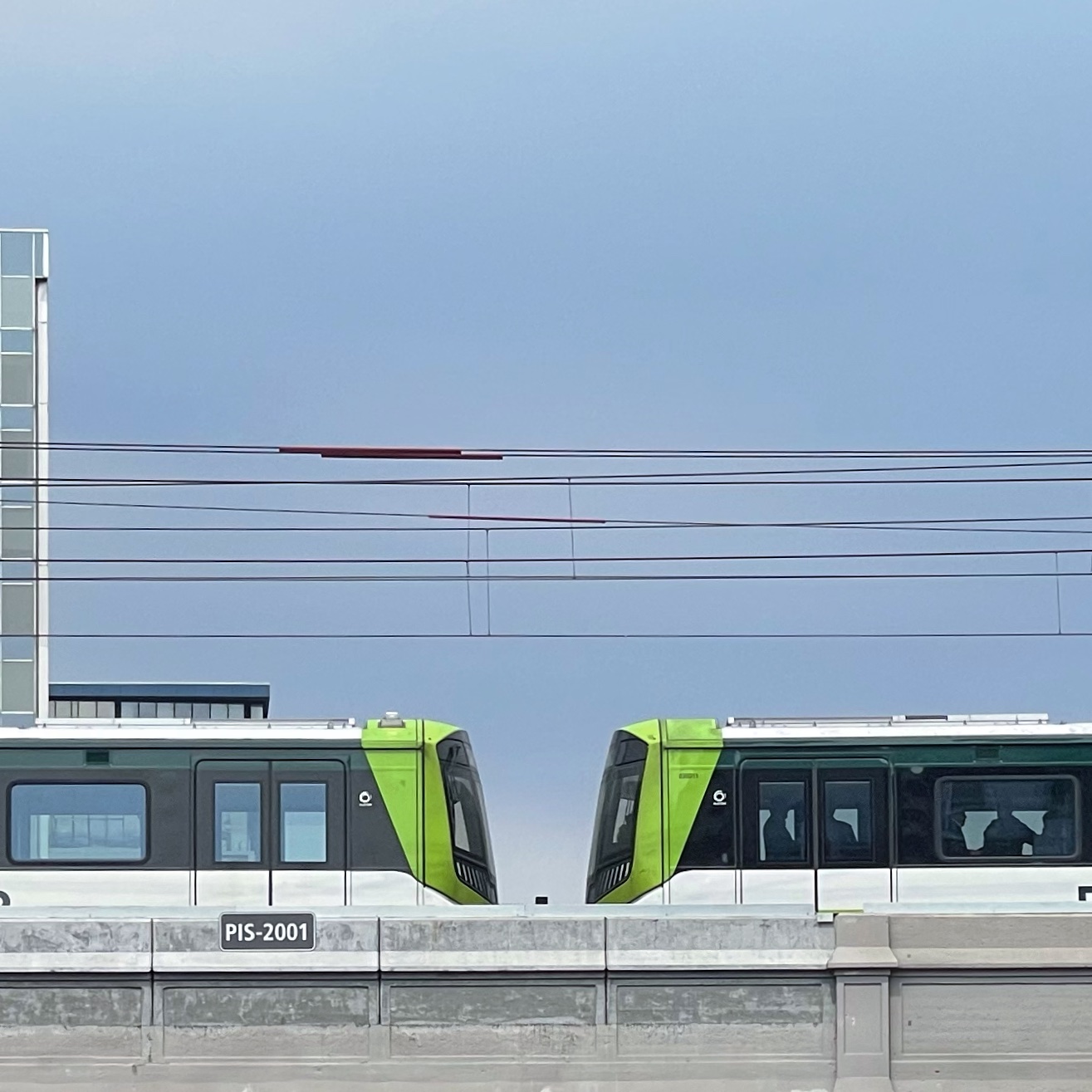
Privately funded by the CDPQ, a pension fund manager, in around a decade they will have built a system the size of the existing Metro. The project has been problematic in several ways, but with the depressingly glacial pace of transit development in Montreal in recent decades, such a project is perhaps the only way Montreal could have increased its transit network by this vast amount in such a short period of time.
I’m not going to talk much about the REM here, as at the time of writing the first section of this network is due to open within a few days, and there will be a lot of analysis and opinion pieces to read. But, my overwhelming hope is people ride this new super-modern network and ask themselves and their elected representatives: “Wow, this is great. Why not more transit?”
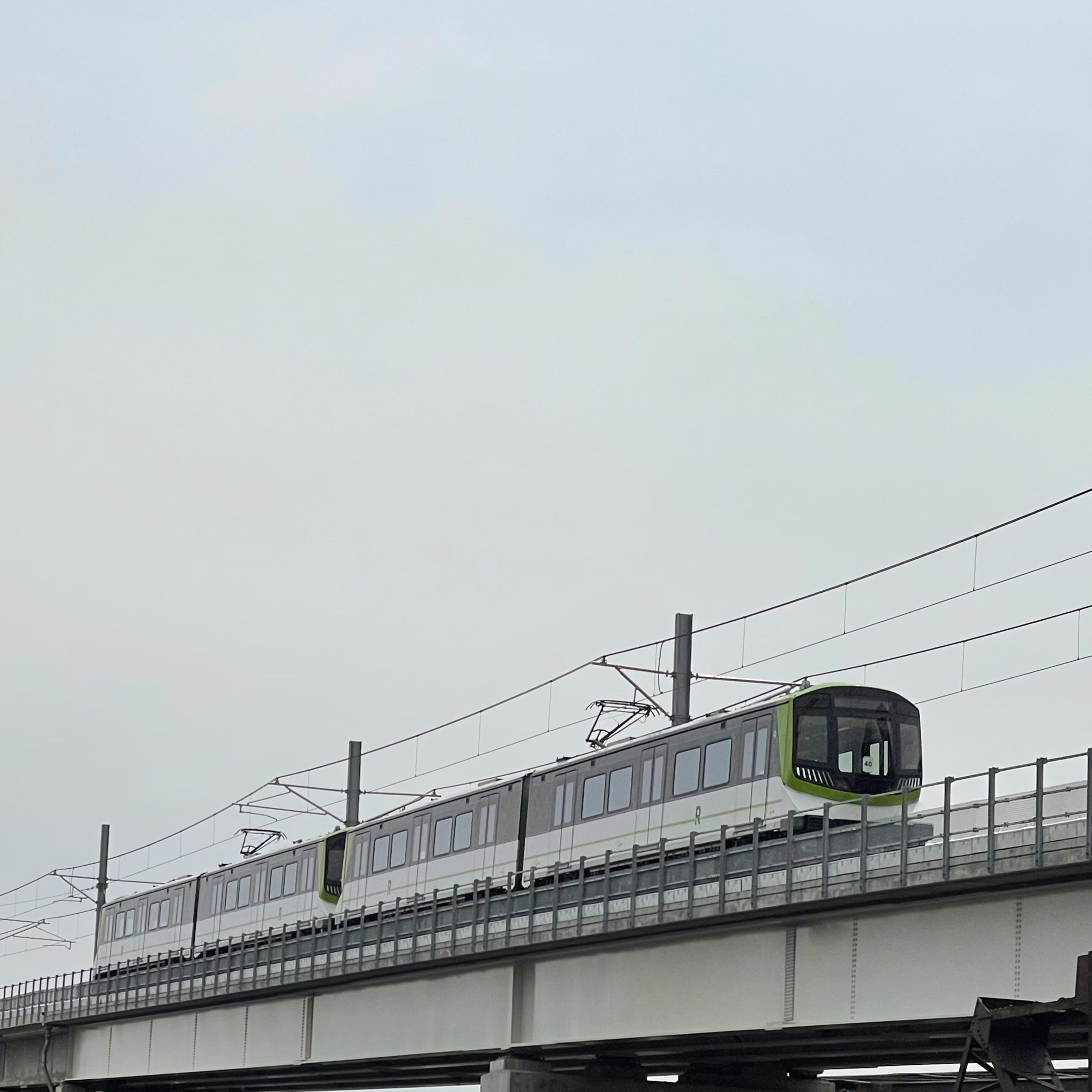
Finally, lets revisit exo. It’s a sorry network which pales in comparison to its Metro and REM brethren and really hasn’t been shown a lot of love over the decades.
I can see two possible futures for the exo network. The good future comes from people being so impressed with the REM they demand a better train service to match. This could take the form of improved frequencies or even the lines being converted to light rail, in the same way the REM took over exo’s now defunct Deux-Montagnes line line.
The bad future is a continued degradation of service down to the point where people stop using it and the lines are closed. This could come about on the Vaudreuil–Hudson because of competition from the nearby REM in the West Island. Or, it could simply be because exo as an organisation has little interest in maintaining a Montreal-centric commuter network, preferring instead to focus on its own bus network which operates around the edge of the metropolitan area. Only time will tell.
Back to the Challenge
So, did I complete my challenge? I did indeed! It was fun if tiring, and there were some great highlights to the day:
- Having time to explore Point-aux-Trembles, a modern station I never would have spent time at were it not waiting for that first train of the day.
- Track-bashing the section of exo5 between Ahuntsic and Central Station (which will likely no longer be traversable once the REM opens)
- Amazing views over the Saint-Lawrence river in Lasalle
- Having a speedy lunch in the sun in Parc Jean-Drapeau
- Discovering how difficult it actually is to live blog a fast-moving activity in real-time. As if the challenge wasn’t hectic enough on its own!
- All the interesting replies I received on Mastodon throughout the day.
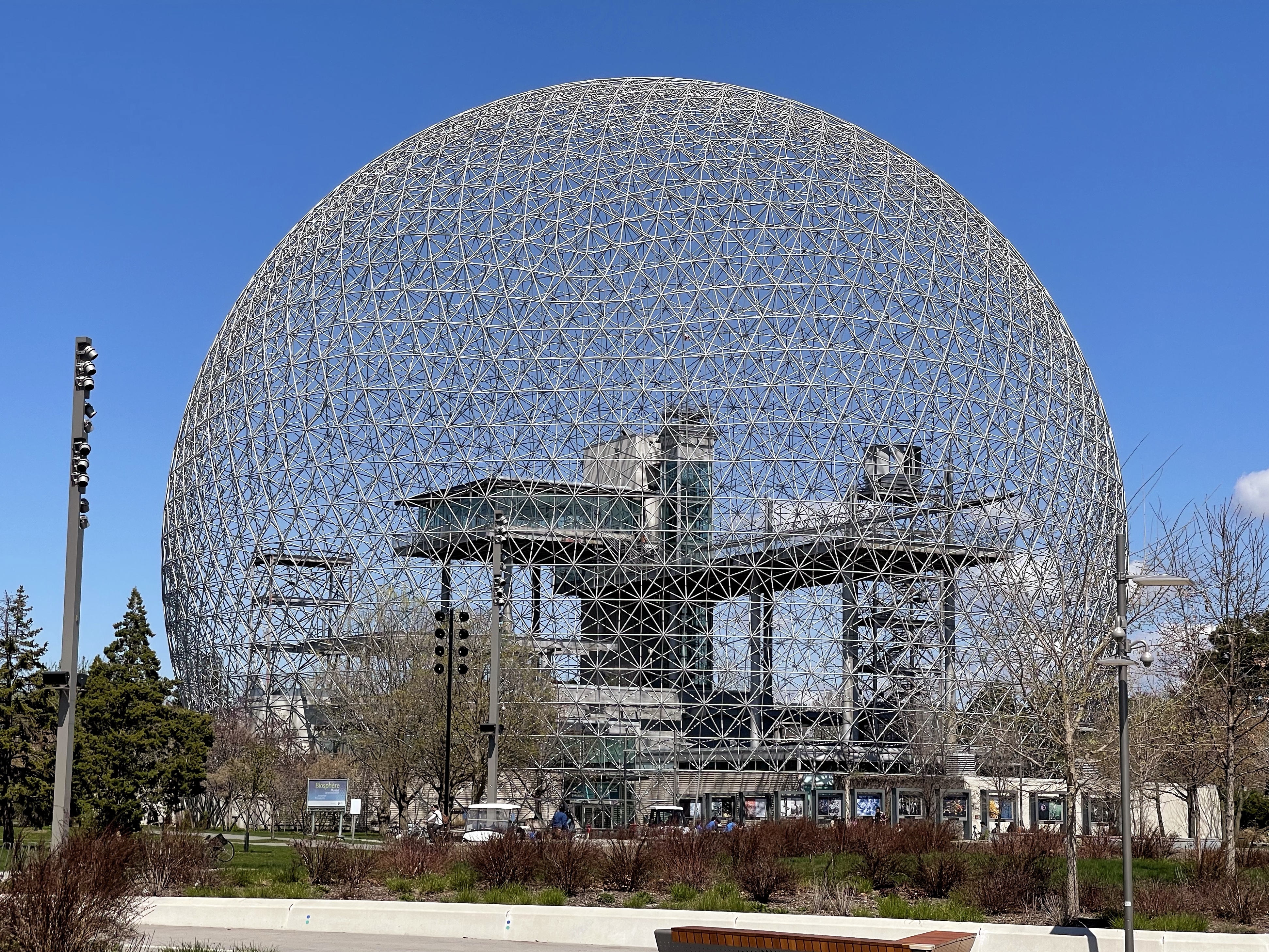
Would I do it again? I think it’s almost certain once the REM is fully operational I’ll give it another go, and I expect all those extra track miles will make things even more of a challenge!
Final Thoughts
For the best part of the decade, Montreal has had the bones of a decent transit network, but it stagnated for too long due to its historical fragmentation and successive governments who really didn’t understand the value of transit.
But now Greater Montreal is being shown some love, and with an integrated fare system and map as well as an entirely new regional light rail system, not to mention a number of smaller but significant projects, the future is very suddenly looking so much brighter.
And we have to hope those who govern, plan and fund our transit network keep this momentum going into the future, because in a continent built on car dependency Montreal has the very real potential to be a shining beacon of sustainability, mobility, liveability and a model for other cities to follow.

¹ exo Train Schedules: https://exo.quebec/en/trip-planner/train